Hitoana Fuji-ko Iseki(人穴富士講遺跡) in Fujinomiya City is a a holy site of Fuji-ko where about 230 monuments remain. Fuji-ko worshippers build the monuments in honor of Kakugyo and another worshippers, in commemoration of reaching the summit. Now the cave is off-limits to visitors.
His followers, Murakami Kosei(村上光清, 1682-1759) and Jikigyo Miroku(食行身禄, 1671-1733), activated Fuji-ko after his death.
Kitaguchi Hongu Fuji Sengen Shrine(北口本宮冨士浅間神社) in Fujiyoshida City
It is confirmed that there were already the shrine's gate(trii) in 1480, and the shrine buildings in the mid 16th century. Murakami Kosei put in his own money to restore the shrine buildings at great cost in the 1730s.
The Yoshida Fire Festival(吉田の火祭り, Yoshida no Himatsuri) is held on August 26 by Kitaguchi Hongu Fuji Sengen Shrine and its auxiliary shrine. Mt. Fuji climbing season ends on the day.
Kitaguchi Hongu Fuji Sengen Shrine
 |
| GR002383 by Zengame /flickr |
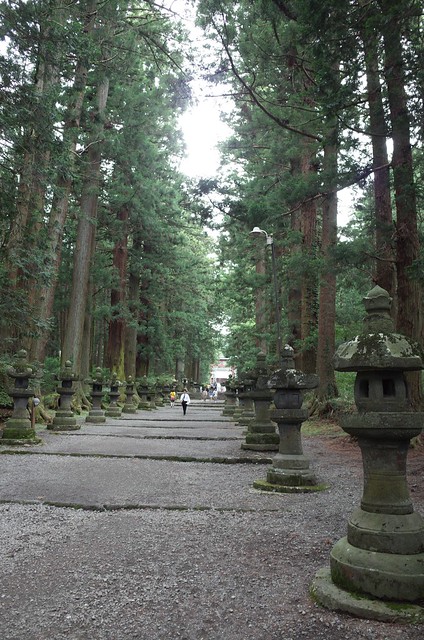 |
| GR002325 by Zengame /flickr |
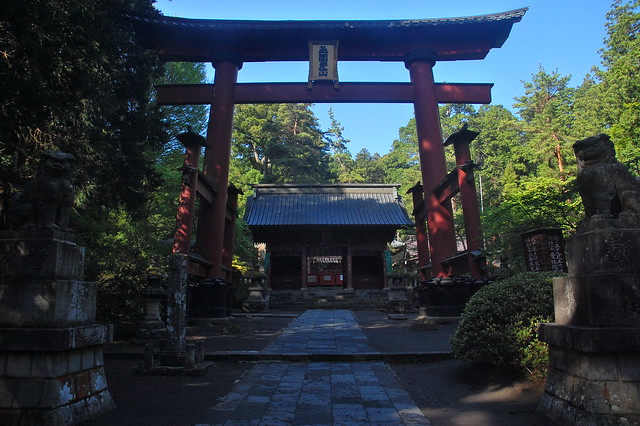 |
| Kitaguchi Hongu Fuji Sengen Jinja. by Simon le nippon /flickr |
 |
| DSC_4412 by Simon le nippon /flickr |
 |
| Fuji Sengen Shrine, Mt. Fuji by eyeonjapan.com /flickr |
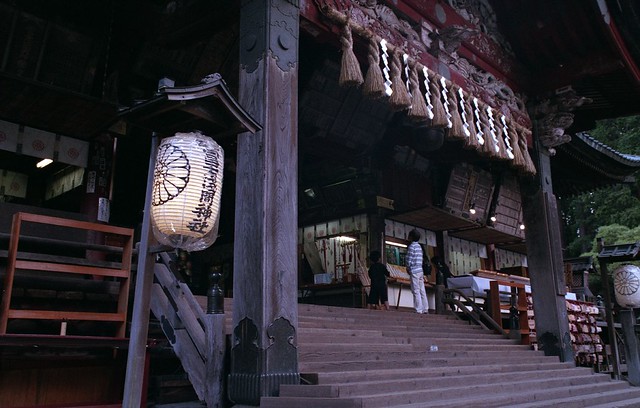 |
| 富士浅間神社 - Fuji Sengen Jinja shrine by hogeasdf /flickr |
In a cave, Jikigyo Miroku practiced fasting, went into a meditative state, and died in 1733. It's the practice called Nyujo causing one's own deaths in a way that results in mummification. His Nyujo was reported sensationally by kawaraban in Edo(current Tokyo), and his name became widely known to the public. Kawaraban is a single-sheet newspaper printed by means of woodblock printing. They are very much like tabloid papers, and peddlers sold the papers while delivering sales pitch on a street corner.
One of his followers founded a Ko(講) three years after his death. He built an artificial mound named Fujizuka(miniature of Mt. Fuji) on the present-day Waseda University campus in Tokyo in 1779. The mound was moved to the site about 400 meters away from the campus in 1965.
In the Edo Period, it was not easy for worshippers to climb Mt. Fuji. Fujizuka mounds were designed to allow those who couldn't visit Mt. Fuji to simulate the pilgrimage to Mt. Fuji. Many fujizuka mounds still exist in Japan.
Commoners were prohibited from moving freely across Japan in the Edo Period, but only religious pilgrimage was allowed. However, the cost of the pilgrimage was comparable with a farmer's annual income. Members of Ko(講) put aside some money on a regular basis for the pilgrimage and chose delegates as pilgrims.
For more information about Onshi belonging to Ise Jingu at http://ichinen-fourseasonsinjapan.blogspot.jp/2010/06/ise-ondo-koi-no-netaba.html
In the late Edo period, multitudinous Fuji-ko were founded and flourished. Even now, about 70 Fuji-ko groups are active. Each pilgrim in white clothing and a sedge hat climbed the mountain with a big walking stick while chanting the phrase“Rokkon Shojo" (六根清浄, purification of the six roots of perception). The six roots of perception are the eye(sight), the ear(hearing), the tongue(taste), the nose(smell), the body(touch), and the mind.
present-day Fuji-ko pilgrims
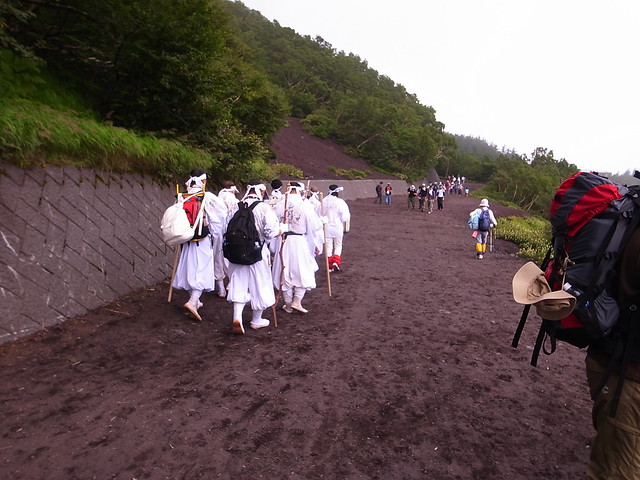 |
| 富士山登山(吉田ルート) Climb Mt.Fuji(Yoshida Route) by jetalone /flickr |
Most pilgrims climbed up Mt. Fuji from the relatively gentle Yoshida route, offered prayers at the mountain's top, and went down to Gotenba through a long and steep sand hill called sunabashiri(砂走り). This route became popular, as Miroku set down the Yoshida route as the main climbing route.
Most Fuji-ko pilgrims lodged in oshi houses in Kamiyoshida. At peak, there were about 90 oshi lodging houses in Kamiyoshida which was the starting point of the Yoshida route.
Each oshi lodging house had a shrine, a large hall for lodging, a large kitchen, and a waterfall for purifying oneself. Konohayasakuya-hime was enshrined in the shrine, oshi in a priest's garb recited prayers.Nowadays there are about 40 oshi in Kamiyoshida.
Oshi houses were open for only two months during the Mt. Fuji climbing season. After the season ended, oshi travelled all over the country and were engaged in missionary work. They visited parishioners for reciting prayers, exorcising evil spirits, and giving talismans every year.
Fuji-ko pilgrims climbed Fuji from the Yoshida route after visiting Kitaguchi Hongu Fuji Sengen Shrine. Oshi didn't climb Mt. Fuji and sent pilgrims off. People called Sendatsu led them to the top of Mt. Fuji. Porters carried their food, cold protection clothes up the mountain.
Three Shinto priests of Kitaguchi Hongu Fuji Sengen Shrine are also oshi. Fuji-ko declined after the profession of onshi was abolished in 1871. Now only two oshi lodging houses have kept the business running in Kamiyoshida, and oshi don't visit parishioners in winter. About 70 Fuji-ko groups are still active. They climb Mt. Fuji in summer, but most of them rest at oshi lodging houses without staying overnight.
 |
house of the Osano Family photo by 列島宝物館 |
World Heritage site Mount Fuji includes two oshi's houses which Oshi's family lived in, and pilgrims stayed at.
The former house of the Togawa Family, 旧外川家住宅) is open to the public, but the house of the Osano Family(小佐野家住宅) is closed.
On the day before Mount Fuji climbing, Fuji-ko pilgrims visited Funatsu and Yoshida lava tree molds, and purified themselves by passing through the caves. Fuji-ko worshippers attached a great importance to the two caves because both of them were near the Yoshidaguchi climbing trail.
Hasegawa Kakugyo discovered a lava cave at the north foot of Mt. Fuji in 1612 when he climbed the mountain. He enshrined Asama no Okami, the deity of Mt. Fuji, in the cave.
Funatsu lava tree molds(船津胎内樹型, Funatsu Tainai Jukei) in Fujikawaguchiko-machi, Yamanashi Prefecture were discovered by a Fuji-ko worshipper in 1673. Yoshida lava tree molds(吉田胎内樹型, Yoshida Tainai Jukei) in Fujiyoshida City, Yamanashi Prefecture were developed as a holy site in 1892. They are interconnected lava molds. A lava flow coated littered fallen trees and burned the insides out leaving interconnected lava molds around the trees. Funatsu tree-mold cave is 68 meters long. Yoshida tree-mold cave is 61 meters long. They have branching smaller caverns. Yoshida Tainai and more than 60 tree molds scattering in this area, are designated as a natural monument in Japan.
Tainai(胎内) means the interior of the womb. The caves are called Tainai from its resemblance to the human rib cage or the womb of a mother. In Fuji faith, one can be transformed by passing through the cave. Now Yoshida tree-mold cave is normally closed, but it's open to the public on April 29 when Oshi hold Tainai-sai(Tainai Festival). Visitors can enter the cave after a shrine ritual takes place to pray for minimizing damage from volcanic eruptions.
The World Heritage site Mount Fuji includes Yoshida route. This route became popular, as Miroku set down the Yoshida route as the main climbing route. Even now, about 60% of Fuji climbers take Yoshida route(Yoshidaguchi climbing trail) in Yamanashi Prefecture.
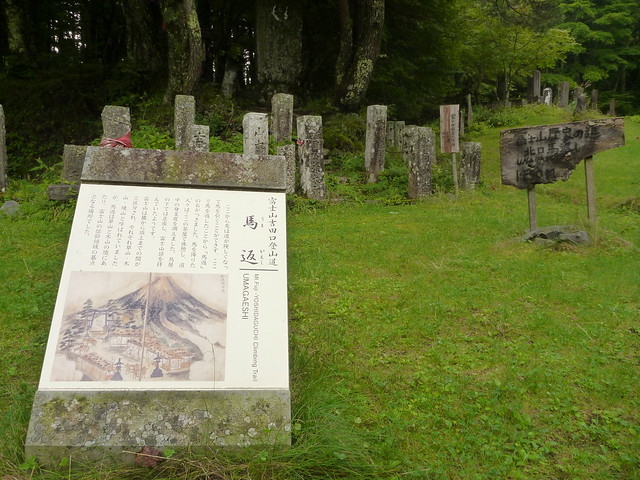 |
| 馬返, 一合目から富士山に登る Climbing Mt.fuji, from the starting point of Yoshidaguchi Climb Trail by jetalone /flickr |
Umagaeshi(馬返) at 1,450 meter elevation
Horses were not able to climb up Fuji from here, so climbers had them go back.
Mt. Fuji worshippers used to purify themselves here.
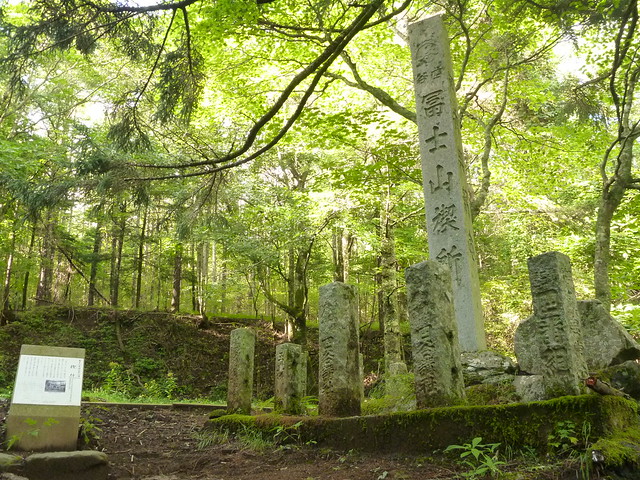 |
| 富士山禊所跡, 一合目から富士山に登る Climbing Mt.fuji, from the starting point of Yoshidaguchi Climb Trail by jetalone /flickr |
The Kawaguchikoguchi climbing trail starting from Mt. Fuji 5th Station(Fuji-Subaru Line 5th Station) merges with Yoshidaguchi climbing trail at the Mt. Fuji 6th Station.
2nd station on Yoshida route
4th station on Yoshida route
5th station on Yoshida route
Buddhist monk Nichiren's statue
5th station on Yoshida route
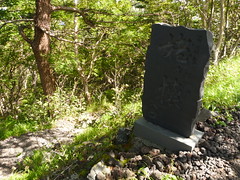
姥ヶ懐, 一合目から富士山に登る Climbing Mt.fuji, from the starting point of Yoshidaguchi Climb Trail
by jetalone /flickr
9th station on Yoshida and Subashiri routes
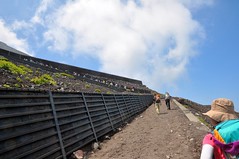
富士山登山2010 (Mt. Fuji Climb) by imgdive /flickr
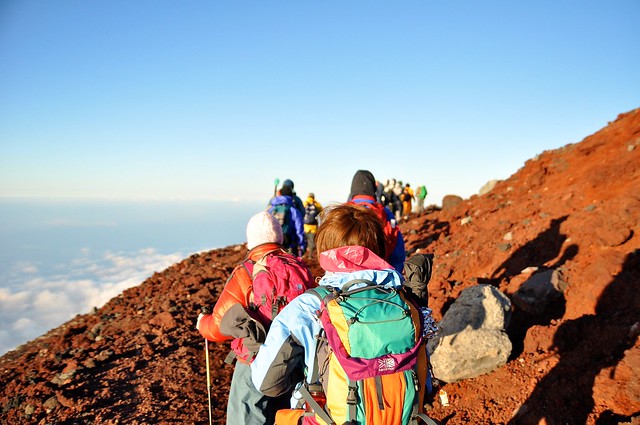 |
| 富士山登山2010 (Mt. Fuji Climb) by imgdive /flickr |
4.3 kilometers to the summit
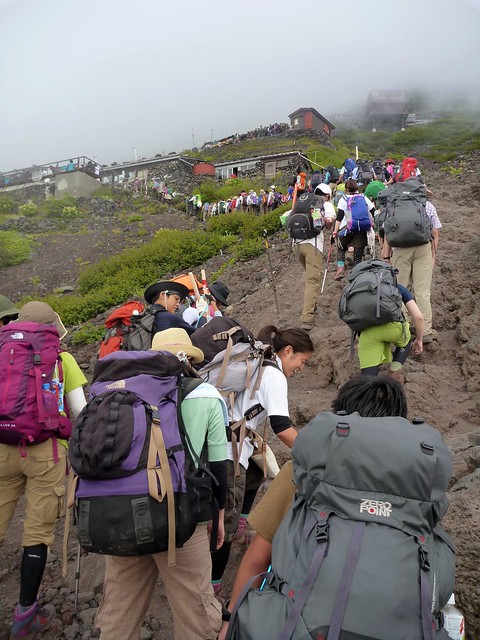 |
| 富士山登山(援人やま部) Mt.Fuji Trekking 2012 by jetalone /flickr |
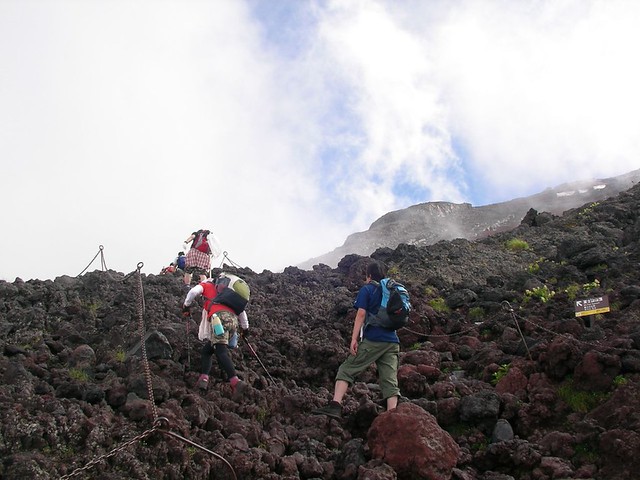 |
| 富士山登山2009 Climbing Mt.Fuji by jetalone /flickr |
at the end of the Yoshida route
Fuji-ko pilgrims walked around the edge of Fuji's summit crater. It's called Ohachimeguri(お鉢めぐり). It take about an hour and half to go around the crater.
;
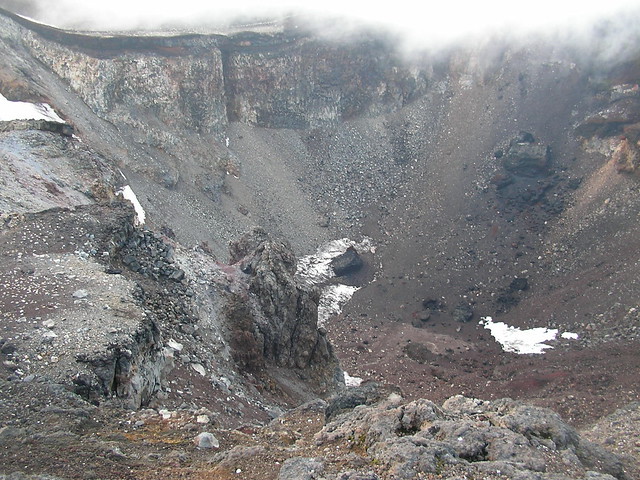 |
| 富士山の火口, 富士山登山(富士宮ルート) Climbing Mt.Fuji by jetalone /flickr |
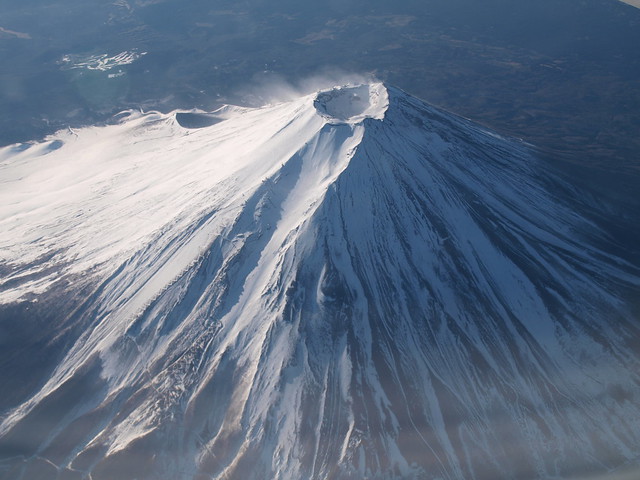 |
| P1023494 by shishamo72 /flickr |
Kengamine Peak- the real peak of Mt.Fuji
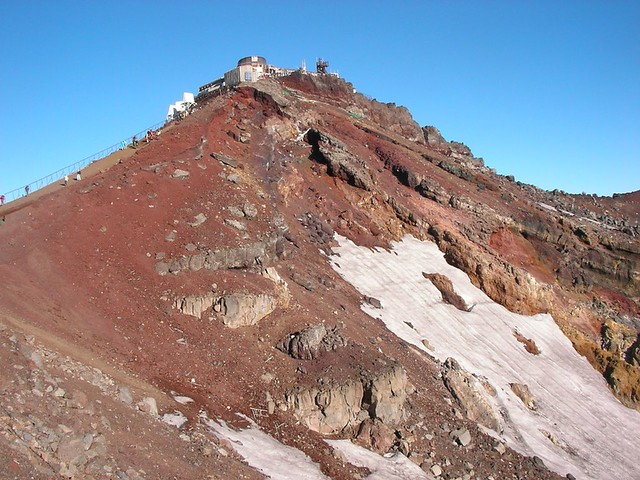 |
| 剣が峰・富士山測候所(富士山お鉢めぐり) Mt.Fuji Ohachi-meguri by jetalone /flickr |
Kengamine Peak and Konoshiroike Pond
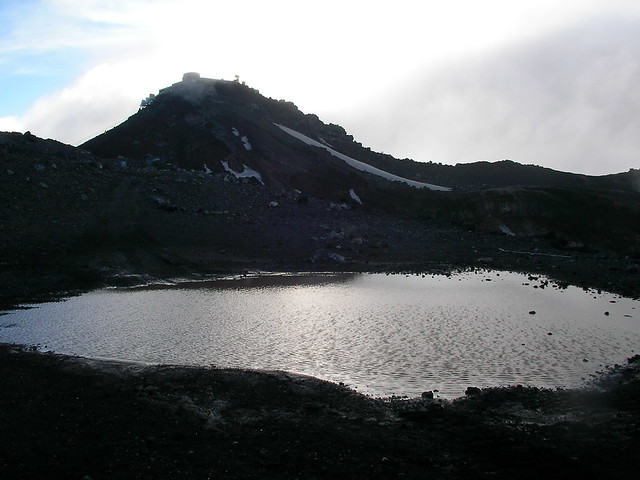 |
| 剣が峰と鰶(このしろ)池, 富士山登山(富士宮ルート) Climbing Mt.Fuji by jetalone /flickr |
former Mt. Fuji Weather Station on Kengamine Peak
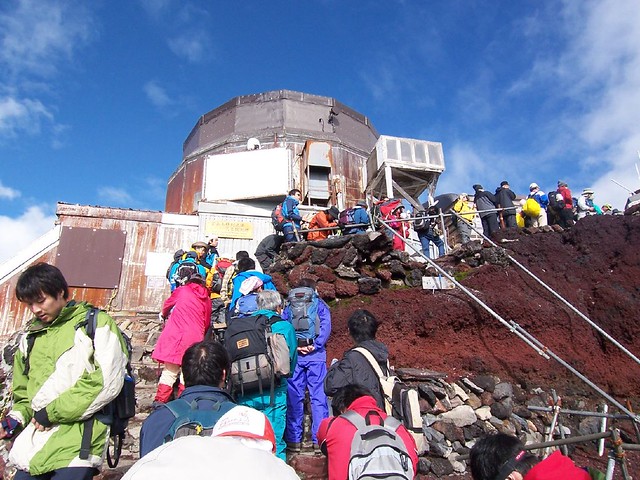 |
| 日本最高地点 剣が峰(富士山お鉢めぐり) Climbing Mt.Fuji by jetalone /flickr |
Dainichidake Peak(Asahidake Peak)
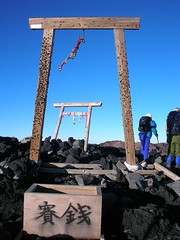
Mt.Fuji Ohachi-meguri 大日岳(朝日岳, 富士山お鉢めぐり) by jetalone /flickr
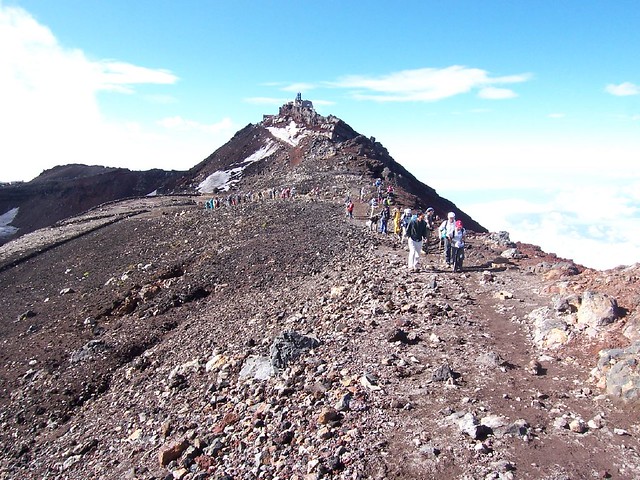 |
| 富士山お鉢めぐり(富士山登山2009) Climbing Mt.Fuji by jetalone /flickr |
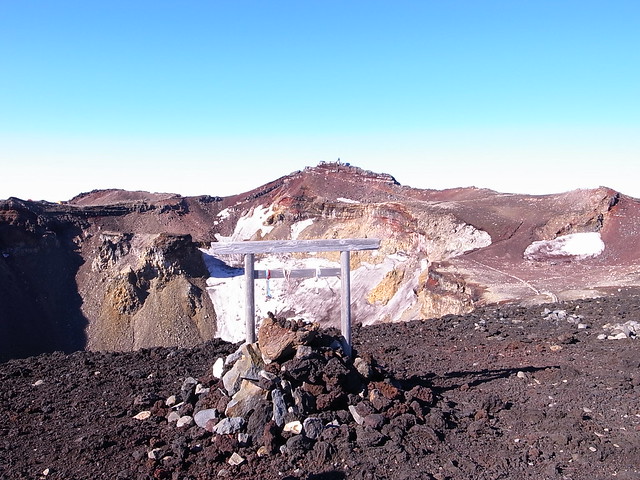 |
| お鉢めぐり, 富士山登山(吉田ルート) Climb Mt.Fuji(Yoshida Trail) by jetalone /flickr |
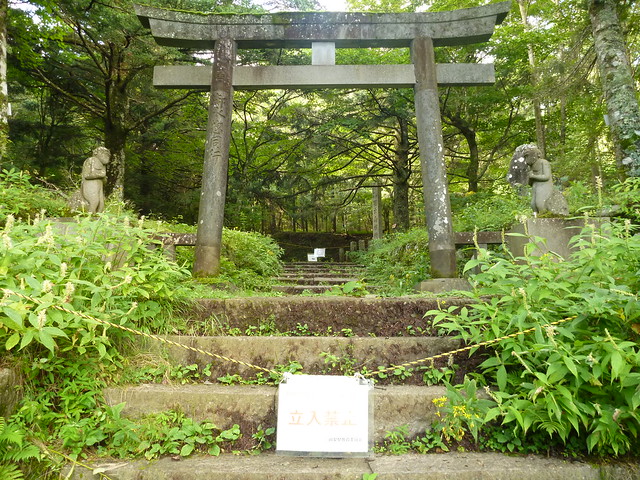
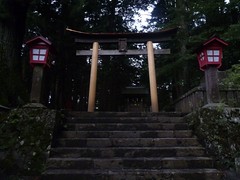
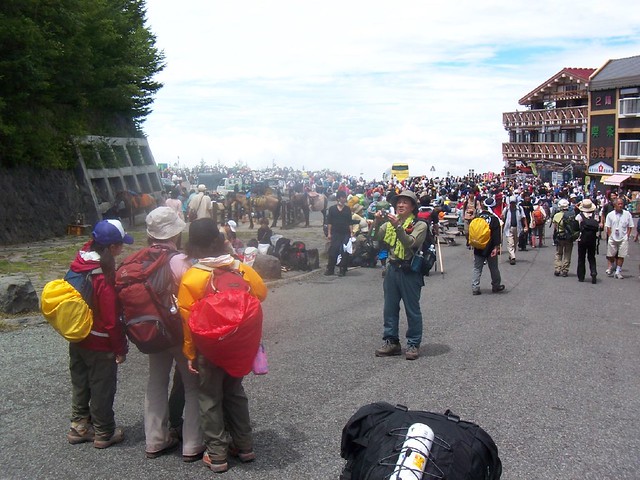
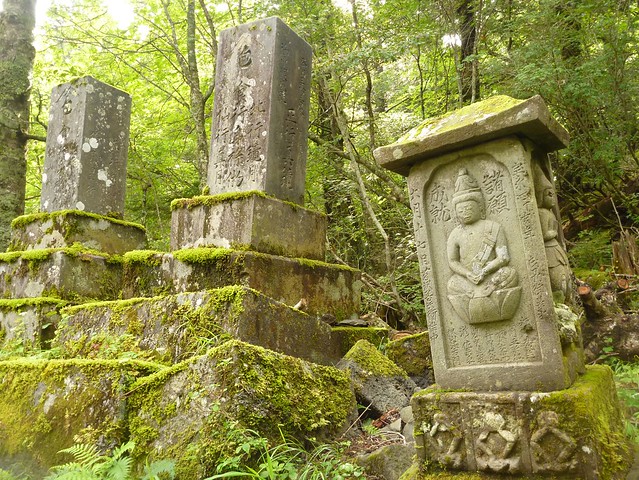
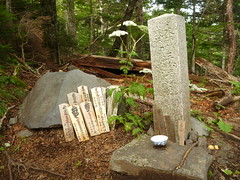
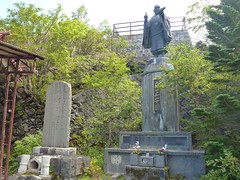
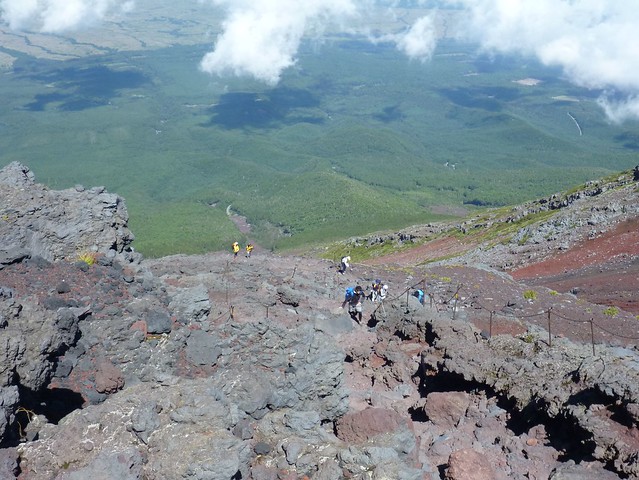

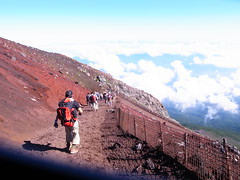
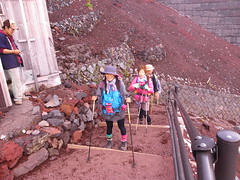
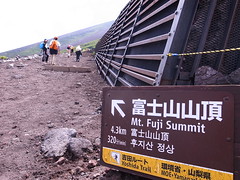
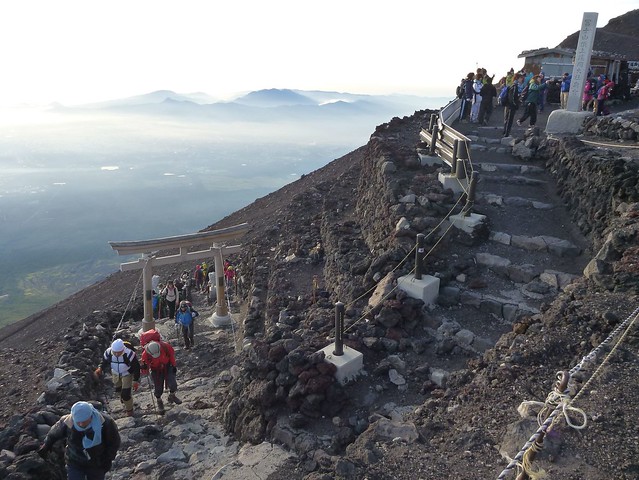
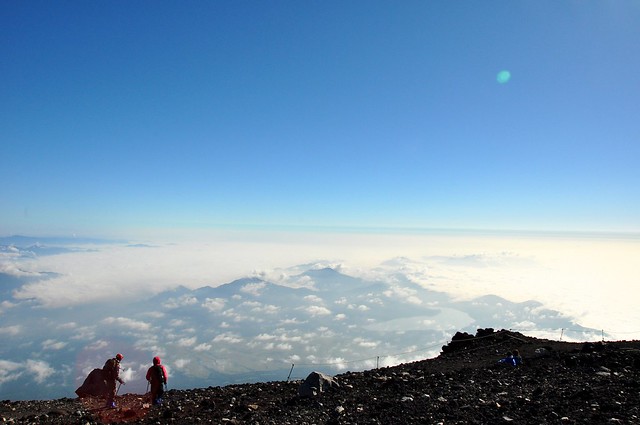
No comments:
Post a Comment